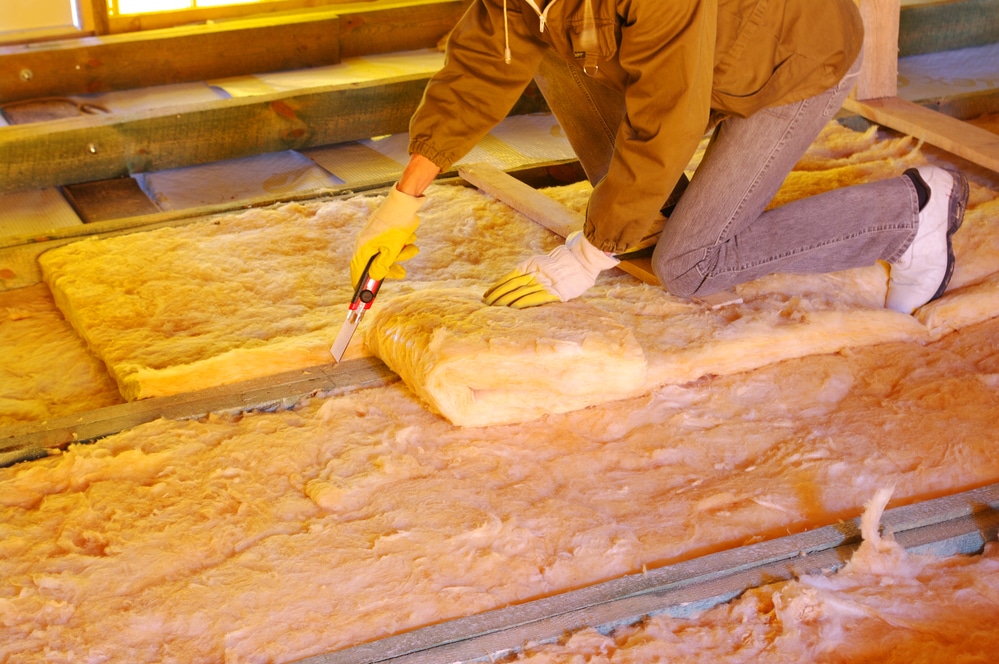If you live in an older home or plan to move into one, understanding what asbestos insulation looks like can save you from this dangerous material. While once considered a must-have construction material due to resisting fire, electricity, and corrosive chemicals, asbestos hazards outweigh its insulating ability. Older homes usually have asbestos in the insulation, whether in the walls, ceilings, wrapped around electrical wires, or encasing the plumbing pipes.
Are you asking, “What does asbestos insulation look like?” Learn how to recognize asbestos insulation materials and what dangers they present. Below, the crawl space and attic insulation experts at Attic Projects answer this question and more so you can trust that your Californian home remains a safe structure.

How Does Asbestos Present a Health Hazard?
Asbestos mineral fibers naturally occur in rock and soil. After discovering its fire-resistant properties, builders preferred asbestos over other home insulation methods. The fibrous substance came in several forms, so nearly any part of the home benefitted from asbestos insulation, including attics, walls, and crawl spaces.
Two of its most common application methods included loose-fill and spray-on insulations. While both offered protection from temperature, weather, and resistance to fire, they also easily disintegrate. When released into the air, asbestos fibers can enter human or animal lungs, causing many life-threatening conditions, including:
- Mesothelioma: Cancer is typically associated with asbestos affecting the lung’s mesothelial tissue, which lines the lungs, heart, or abdomen.
- Cancer: Various forms of cancer can infect the kidney, throat, lungs, or gastrointestinal tract. While not always the result of inhaling the mineral, asbestos exposure may increase other risk factors.
- Pleural Effusions: A condition in which fluid builds up around your lungs, affecting your ability to breathe and causing chest pain.
Types of Insulation That May Contain Asbestos
The two most popular insulation types include vermiculite and asbestos pipe. When answering the question, “What does asbestos insulation look like?” understanding the differences between these common insulation types can help you learn how to remove it safely.
Vermiculite Insulation
If you look in an old home’s attic, walls, or crawlspace, you may come across loose-fill or blow-in vermiculite insulation contaminated with asbestos. A vermiculite mine in Libby, Montana, supplied U.S. home builders with this material until 1990. Homes built before this date most likely have vermiculite insulation somewhere in their construction.
What Does Vermiculite Insulation Look Like?
Loose-fill or blow-in insulation looks like tiny gravel or pebbles and, if lifted, will weigh very little. Part of what made vermiculite such a popular insulation material was that it had no smell and expands when heated, making it easy for home builders to “blow in” the insulation. The material may have a gray-brown or silver-gold tone to it.
Asbestos Pipe Insulation
Basements, crawl spaces, utility rooms, furnace rooms, or other service areas often have pipes wrapped with insulation to keep them safe from the elements. Asbestos insulation helped pipes retain heat for hot water and reduced condensation on cold water pipes. The insulation also kept water lines from freezing during the winter months.
What Does Asbestos Pipe Insulation Look Like?
Most pipe insulation has an exterior casing that helps hold insulation tight against the pipe. Before removing it, check out the edges of each piece of insulation. While fiberglass insulation has a cottony texture, asbestos pipe insulation has a corrugated edge resembling cardboard or paper.
How to Identify Asbestos in Vermiculite Insulation
Not all vermiculite insulation has asbestos in it. Although no longer used in new home construction, pure vermiculite presents no serious health risks. However, that doesn’t mean you don’t need to know if your vermiculite has asbestos.
Vermiculite with the common gray-brown or silver-gold color likely has asbestos contamination. Unfortunately, the naked eye cannot see asbestos fibers, nor does the mineral have a particular odor. If you suspect your home has asbestos in its vermiculite insulation, you must have it professionally tested to find out for sure.
Testing Your Property for Asbestos
Your home inspector, HVAC technician, or handyman can’t easily identify the presence of asbestos for the same reasons you can’t: no visible fibers and no smell. Luckily, modern technology makes professional asbestos testing possible for any homeowner. The process involves a tried-and-true method that confirms asbestos in your home:
- An inspector identifies high-risk areas for asbestos use.
- An asbestos expert takes samples from these high-risk areas.
- The samples undergo testing in labs prepared to deal with asbestos hazards.
- You receive results from the tests.
The samples may involve removing insulation from critical areas like your attic, crawl space, walls, or electrical outlets, while other testing measures the number of fibers in your air. Your results will tell you whether or not your home has asbestos and the concentration levels of the fibers. Air quality testing often provides the level of asbestos contamination alone, though testing insulation may work better for you if you want in-depth knowledge of your problem areas.
Frequently Asked Questions (FAQs) – Asbestos Insulation
When Did Asbestos Stop Being Used in Insulation?
Although medical journals began reporting asbestos inhalation illnesses in 1924, American homes continued using the material in insulation for many decades. In 2019, asbestos finally received a ban against its legal use in construction.
What Happens If You Breathe in Asbestos Once?
A single exposure to asbestos can result in the development of lung cancer, mesothelioma, pleural effusion, or other diseases commonly associated with long-term asbestos exposure.
Can You Live in a House with Asbestos?
You can, but it will likely lead to various health consequences. Long-term asbestos exposure aggravates your lungs and inevitably leads to life-threatening health issues, such as the list of diseases and conditions above.
What to Do If You Find Vermiculite-Asbestos Insulation
If you find vermiculite insulation in your home, don’t disturb it. Vermiculite-asbestos insulation requires professional testing by experts like our experienced team at Attic Projects. Until you have testers inspect your insulation, leave it be and keep it contained in the area you discovered it.
Do you have more questions than, “What does asbestos insulation look like?” Contact your local professionals at Attic Projects, serving the San Diego and Orange County areas.




